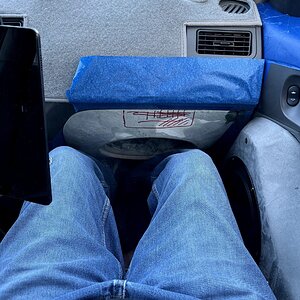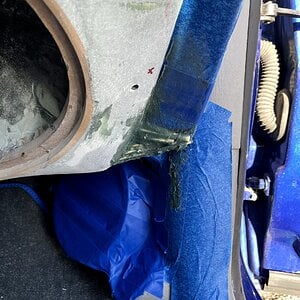MikePresJr
Junior Member
Hello, I am currently using 2 PSU's to run an amplifier for a subwoofer that I will be purchasing soon. This is more of an experiment than anything. Now, here is the dilemma I'm having:
I have 2 PSU's wired in parallel, as to combine the amperage of their respective 12v rails. One is 17, the other is 19, so effectively, I want to pull at least 30 amps out of these bad boys. Now, I've run across a problem; due to the PSU's internal voltage detector, the 19A one is always doing the work, as they are both the same voltage, so the weaker one is 'cancelled' out, per say. What I want to do, is increase the voltage, or lower it, by a little bit, so that the voltage won't cause this problem and I can harness all the amps I need. Now, where would I put a diode or resistor to do this? Would I only do it to 1 of the PSU's, or would I have to solder the diodes/resistors onto both of them? Any other input is appreciated.
Note: I'm well aware that using a regulated AC to DC power supply is alot safer and worth it in the long run. I have one of these, this is just an experiment, as stated.
Thank you!
Here is a little diagram I made in paint to show you how I have it wired currently:
edit: I suppose I can't post pictures whilst being a new user. Remove the spaces and go here to view picture. h t t p : / / i41.tinypic.com/2jds2e1.jpg
I have 2 PSU's wired in parallel, as to combine the amperage of their respective 12v rails. One is 17, the other is 19, so effectively, I want to pull at least 30 amps out of these bad boys. Now, I've run across a problem; due to the PSU's internal voltage detector, the 19A one is always doing the work, as they are both the same voltage, so the weaker one is 'cancelled' out, per say. What I want to do, is increase the voltage, or lower it, by a little bit, so that the voltage won't cause this problem and I can harness all the amps I need. Now, where would I put a diode or resistor to do this? Would I only do it to 1 of the PSU's, or would I have to solder the diodes/resistors onto both of them? Any other input is appreciated.
Note: I'm well aware that using a regulated AC to DC power supply is alot safer and worth it in the long run. I have one of these, this is just an experiment, as stated.
Thank you!
Here is a little diagram I made in paint to show you how I have it wired currently:
edit: I suppose I can't post pictures whilst being a new user. Remove the spaces and go here to view picture. h t t p : / / i41.tinypic.com/2jds2e1.jpg



